

Kids and poetry. Using poetry in the classroom may seem daunting at first, but below you’ll find steps and tips to help you get your learners appreciating and writing poems.
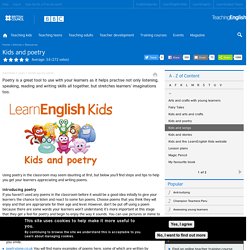
Introducing poetryIf you haven’t used any poems in the classroom before it would be a good idea initially to give your learners the chance to listen and react to some fun poems. Choose poems that you think they will enjoy and that are appropriate for their age and level. However, don’t be put off using a poem because there are some words your learners won’t understand; it’s more important at this stage that they get a feel for poetry and begin to enjoy the way it sounds. You can use pictures or mime to help get the meaning across, just as you do when you read them story books. If you don’t have access to children’s poetry books, try these sites: childrenspoetryarchive.org You can search by topic to find an excellent selection of poems. Remember, poems don’t need to rhyme and it may be easier for lower levels if they don’t try. Liveworksheets.com - Interactive worksheets maker for all languages and subjects.
Mr. Monkey, Monkey Mechanic. The Second Conditional. The second conditional uses the past simple after if, then 'would' and the infinitive: if + past simple, ...would + infinitive (We can use 'were' instead of 'was' with 'I' and 'he/she/it'.

This is mostly done in formal writing). It has two uses. First, we can use it to talk about things in the future that are probably not going to be true. If I won the lottery, I would buy a big house. Second, we can use it to talk about something in the present which is impossible, because it's not true. If I had his number, I would call him. This kind of conditional sentence is different from the first conditional because this is a lot more unlikely. Mobile Learning Digital Storytelling Apps. The Art Book Page Three, Caterpillars: Portfolio Assessment and Art Lessons for Kids: KinderArt ® Level: PrimaryGrades: K-2 | Age: 5-8 | Written by: Maryanne Messier [Maryanne is a teacher from Janesville Wisconsin.]
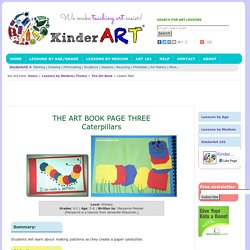
Summary: Students will learn about making patterns as they create a paper caterpillar. Objectives: This Art Book was created to help art educators by giving them another form of assessment. So many times we as art educators find it difficult to assess a child's progress when projects are sent home. What You Need:3x3 colored construction paper squares (red, yellow, blue) scissors glue crayons 10x12 white construction paper 12x18 colored construction paper (to create another page) "I can make a pattern" stripWhat You Do:Talk about patterns. Retelling Folktales. Retelling Folktales About Storytelling Storytelling is one of our oldest art forms.
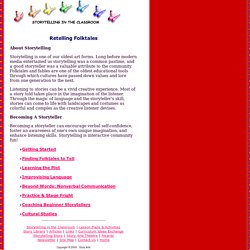
Long before modern media entertained us storytelling was a common pastime, and a good storyteller was a valuable attribute to the community. Folktales and fables are one of the oldest educational tools through which cultures have passed down values and lore from one generation to the next. Listening to stories can be a vivid creative experience. Realbook News. Funny poems online famous poets Top 10 humour poetry. Online Picture Dictionary. English Vocabulary. School Radio - Primary English: Audio teaching resources for speaking and listening skills and primary literacy lessons.
A Handful of Poems by Tony Mitton. Each collection includes text and audio of the poem as well as learning activities, teachers' notes and visual support.
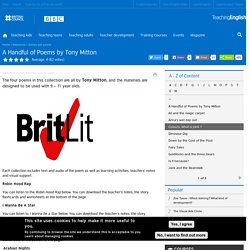
Robin Hood Rap You can listen to the Robin Hood Rap below. You can download the teacher's notes, the story flashcards and worksheets at the bottom of the page. Oxford Owl blog – Advice for parents from Oxford Owl. All Things Grammar - Home. Looking for coloring pages for children ? - Coloring for kids. Verbs exercises - learn English online esl - tenses. We Do Listen Foundation. Books PDF - Learning English vocabulary and grammar. Color by Number Worksheets coloring pages. Download the Free Printable I Spy Games. Musical instruments colouring sheets (SB8937)
English exercises: Music and instruments. Triangle Coloring Page: EnchantedLearning.com. Advertisement.EnchantedLearning.com is a user-supported site.
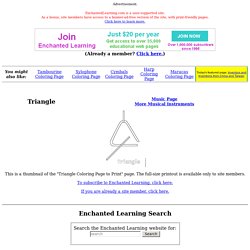
As a bonus, site members have access to a banner-ad-free version of the site, with print-friendly pages.Click here to learn more. (Already a member? Click here.) This is a thumbnail of the "Triangle Coloring Page to Print" page. The full-size printout is available only to site members. Kids classroom rules posters - Under the sea. We have a great range of motivating and bright, colourful classroom rules posters for your primary classroom, designed to help remind your students about how to behave in class.
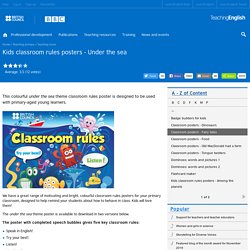
Kids will love them! The under the sea theme poster is available to download in two versions below. The poster with completed speech bubbles gives five key classroom rules: Home - ESL Kids Games : ESL Kids Games. Musical Instruments ESL Printable Worksheets For Kids 1. Here on this page you can download and use ESL Printable Vocabulary Worksheets, Exercises, Handouts, Tests, Activities, Teaching and Learning Resources, Materials, Picture Dictionary, Posters and Puzzles for kids about Musical Instruments.
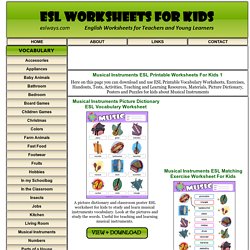
Songs. Level 1. Audios. Four Seasons Sorting Activity Free Printable. Kids songs, ABCs, videos, & free flashcards from Super Simple Learning. Story Links. Martha Speaks True Stories WegiveBooks National Geographic Young Explorer.

Writing with Writers. #1 Educational Site for Pre-K through 5. Brag Tags {Tips & Tricks} Brag Tags {Tips & Tricks} Oh, brag tags, how I love thee.
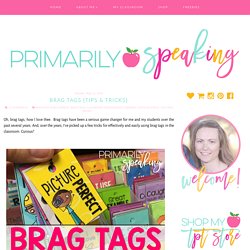
Brag tags have been a serious game changer for me and my students over the past several years. And, over the years, I've picked up a few tricks for effectively and easily using brag tags in the classroom. Curious? Before I share my tricks, let's cover the basics. What are brag tags? Just like any resource, there is no single right or wrong way in which to use brag tags. Alrighty, let's get to those tips and tricks! Illustrated English Idioms and their Meanings. Having recently moved to Brazil, learning a new language and also teaching English, illustrator Roisin Hahessy got thinking about the the English language. On her website, she declares, “When I stopped to think about some English idioms and their literal meaning, I found some of them very funny and thought it would be a nice idea to pick a few of the most common idioms and illustrate them.”
The images below have been reproduced with the direct permission of the illustrator These fantastic illustrations would be ideal for classroom use, when discussing idioms, and similar expressions used in the English language: You can purchase each print individually on Roisin’s website by clicking here. Photo. BusyTeacher: Free Printable Worksheets For Busy Teachers Like YOU! Primary Resources - FREE for Early Years (EYFS) KS1 & KS2.